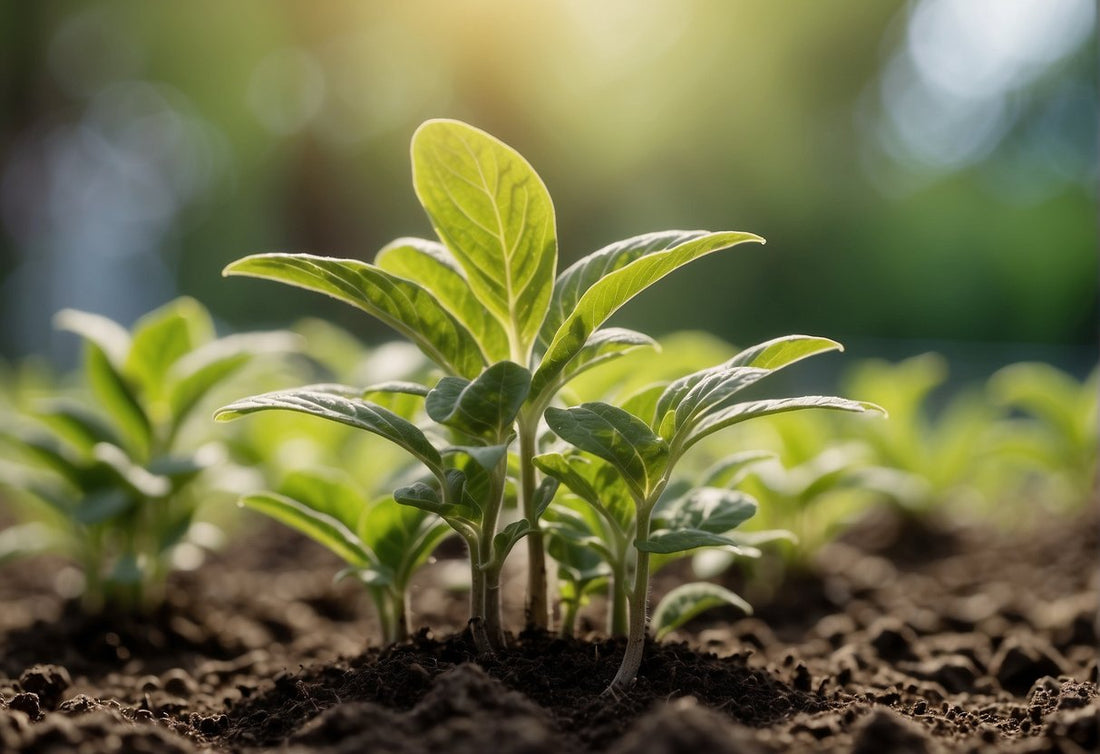Understanding Plant Growth Cycles
When you begin the process of tending to your outdoor plants, it’s essential to understand the plant growth cycles. This knowledge ensures you provide the right care at the appropriate times.
Seed Germination: This is the initial stage of growth. Your plant starts as a seed which requires the right conditions—moisture, temperature, and light—to sprout and begin growth.
Vegetative Stage: In this phase, your focus should be on providing ample sunlight and nutrients for leaf and stem development. Plants rapidly increase in size and should not be topped during this period, as they are establishing their structural integrity.
Flowering Stage: Triggered by changes in light, this phase sees your plants developing buds or flowers. It is critical during this cycle to monitor and adjust care, especially for plants that are sensitive to nutrient changes.
Pre-Flower Topping: Before the full flowering stage, you might top your plants to encourage a bushier growth and more blooms. However, timing is vital—do this too late, and you risk stressing the plant and reducing yield.
Harvest Stage: The final cycle culminates with the harvesting of your plant’s fruits, flowers, or leaves. No topping should occur at this stage as the plant is no longer in a growth phase.
Remember, not all plants have the same length of growth cycles, and external conditions can influence these stages. Monitor your plants carefully to identify the signs that they are transitioning from one stage to the next.
Optimal Timing for Topping Outdoor Plants

Topping outdoor plants is a technique used to promote more lateral growth and increase yields. It's essential to execute this method at the appropriate stage of plant development.
Vegetative Stage Timing
Your outdoor plants will reach a point in their vegetative stage where topping becomes beneficial. This typically occurs:
- When your plant has between 4 to 6 leaves: This indicates that the plant has enough foliage to recover from the stress of topping.
- Before the onset of the flowering stage: Topping during the flowering stage can stress the plant and reduce yields.
Indicators of Readiness for Topping
To determine if your plant is ready for topping, look for:
- Healthy growth rate: Your plant should exhibit vigorous growth and robust health.
- Stem strength: The main stem should be sturdy enough to withstand the cutting process.
- Leaf development: There should be multiple sets of true leaves on your plant, not just seed leaves (cotyledons).
Benefits of Topping Outdoor Plants

Topping your outdoor plants can lead to various advantages that enhance their overall performance and yield. The practice involves removing the top part of a plant to promote more lateral growth.
Increased Yields
By topping plants, you encourage the growth of multiple branches rather than a single main stem. This results in a bushier plant with more sites for flowers or fruits, increasing your potential harvest.
- Number of Colas: A single plant can produce multiple colas instead of one.
- Harvest Volume: More colas often translate to a greater volume of yield at harvest time.
Improved Light Exposure
When a plant is topped, it allows for a more even distribution of light among the leaves and branches.
- Canopy Penetration: Sunlight penetrates more deeply into a wider, topped canopy.
- Energy Distribution: A wider canopy allows the plant to distribute energy more efficiently among its leaves.
Enhanced Plant Structure
Topping outdoor plants results in a sturdier, more balanced structure that can support the weight of increased yields.
- Stem Strength: Secondary branches thicken, leading to a stronger support system.
- Wind Resistance: A lower, bushier plant is less prone to damage from strong winds.
Methods of Topping Plants
Topping plants is a training technique to encourage lateral growth and increase yields. Properly conducted, it can lead to more robust plant development.
Single Topping Technique
To implement the Single Topping Technique, identify the main stem's terminal bud, which is the apex where growth is most vigorous. With clean, sharp scissors or shears, cut the main stem right above the node where two new shoots are emerging. This will redirect energy to these two side shoots, encouraging them to grow into dominant branches.
Multiple Topping Technique
The Multiple Topping Technique involves performing the single topping procedure on new growth multiple times. Wait for the two new shoots from the initial topping to grow several nodes and then repeat the process on these secondary branches. It results in an even bushier plant with multiple dominant growth points that can lead to a higher yield.
Aftercare for Topped Plants
Proper aftercare is essential to ensure your topped plants recover quickly and thrive. Focus on maintaining optimal watering, nutrition, and monitoring to promote robust new growth.
Watering and Nutrient Considerations
After topping, your plants' water and nutrient needs can shift.
- Water: Check soil moisture regularly; water when the top inch feels dry.
- Nutrients: Reduce nitrogen intake temporarily, as less foliage means less demand.
Supplying the right balance encourages recovery without overwhelming your plants.
Pruning and Training Post-Topping
Post-topping pruning and training are crucial to shaping your plant’s new growth.
- Pruning: Remove any small shoots or leaves that won't receive much light to direct energy to the new growing points.
- Training: Gently guide new growth outward to improve light exposure and air circulation.
This management will optimize your plant's structure and yield.
Monitoring for Pests and Diseases
Vigilance against pests and diseases is heightened after topping, as plants can be more vulnerable.
- Inspect: Look for signs of pests or disease on new and old growth regularly.
- Act: Remove affected areas promptly and apply appropriate treatments.
Keeping a close eye on your plants helps prevent small issues from becoming serious problems.

